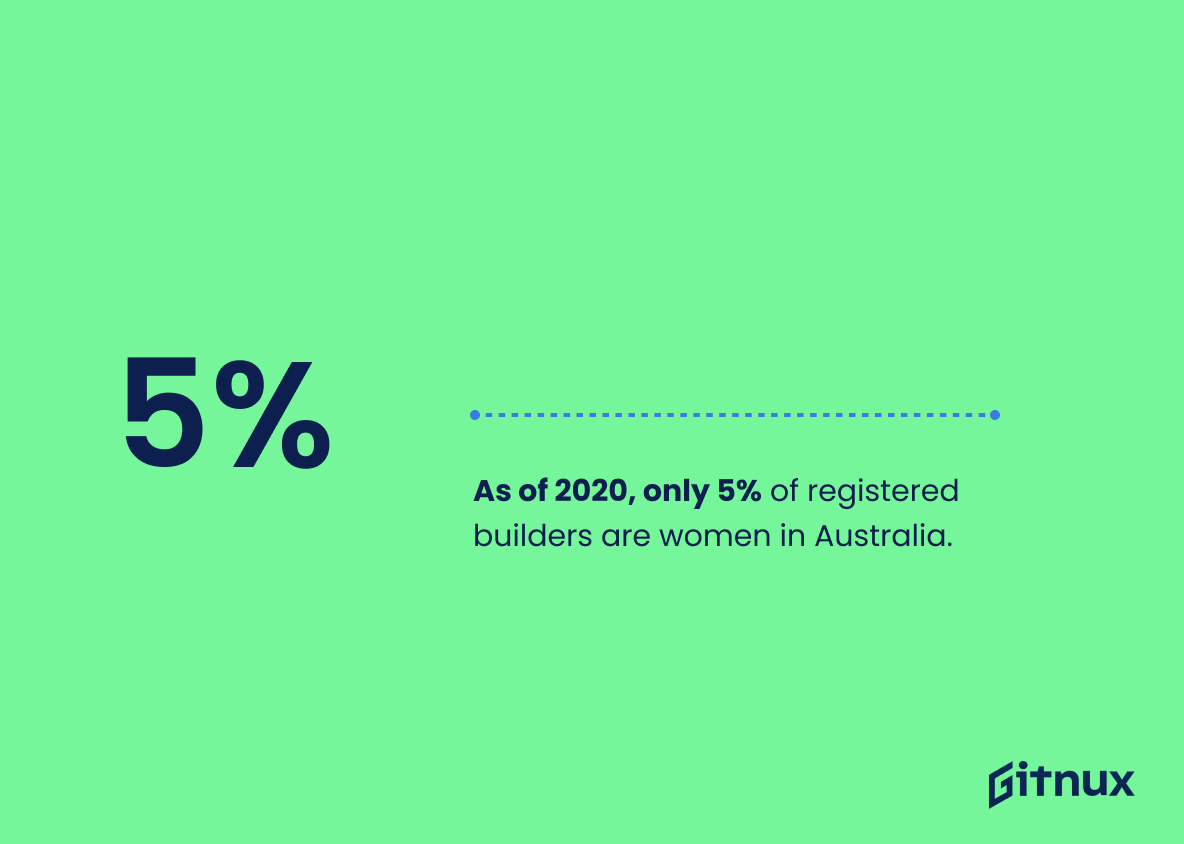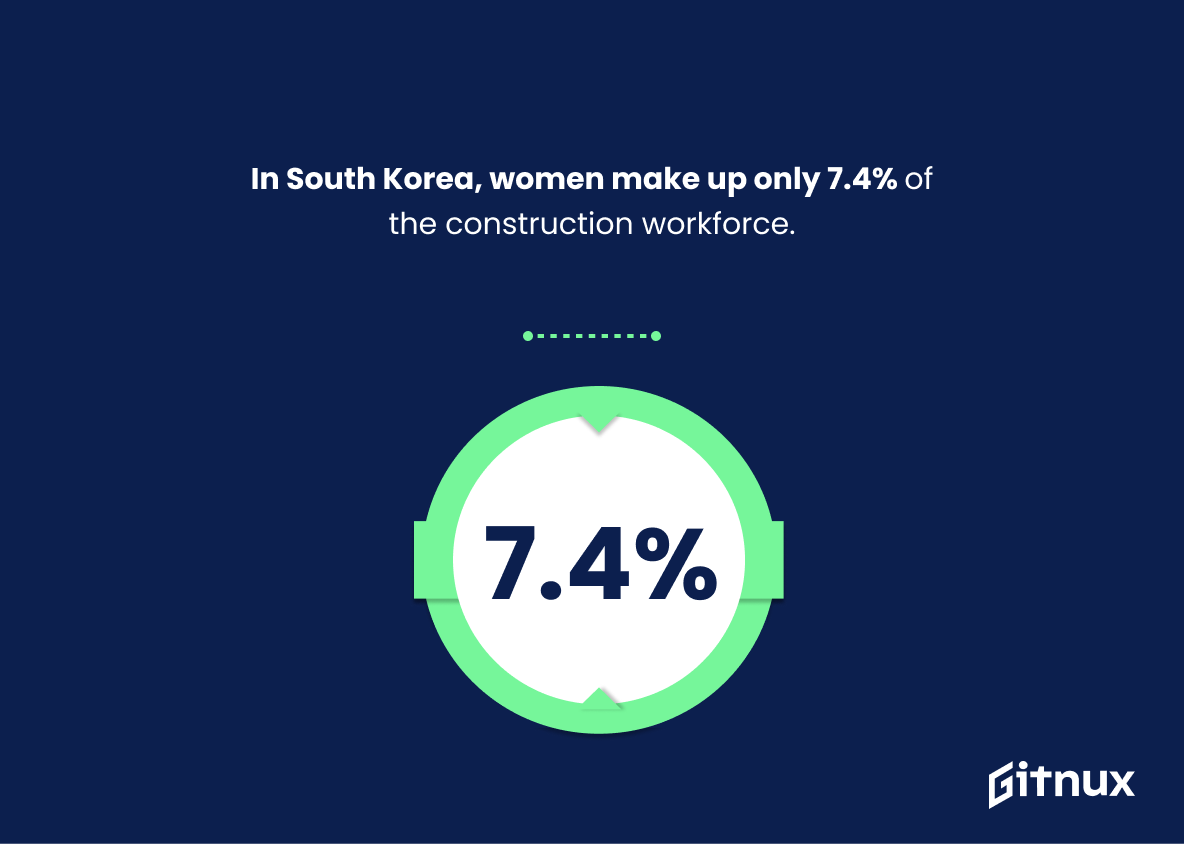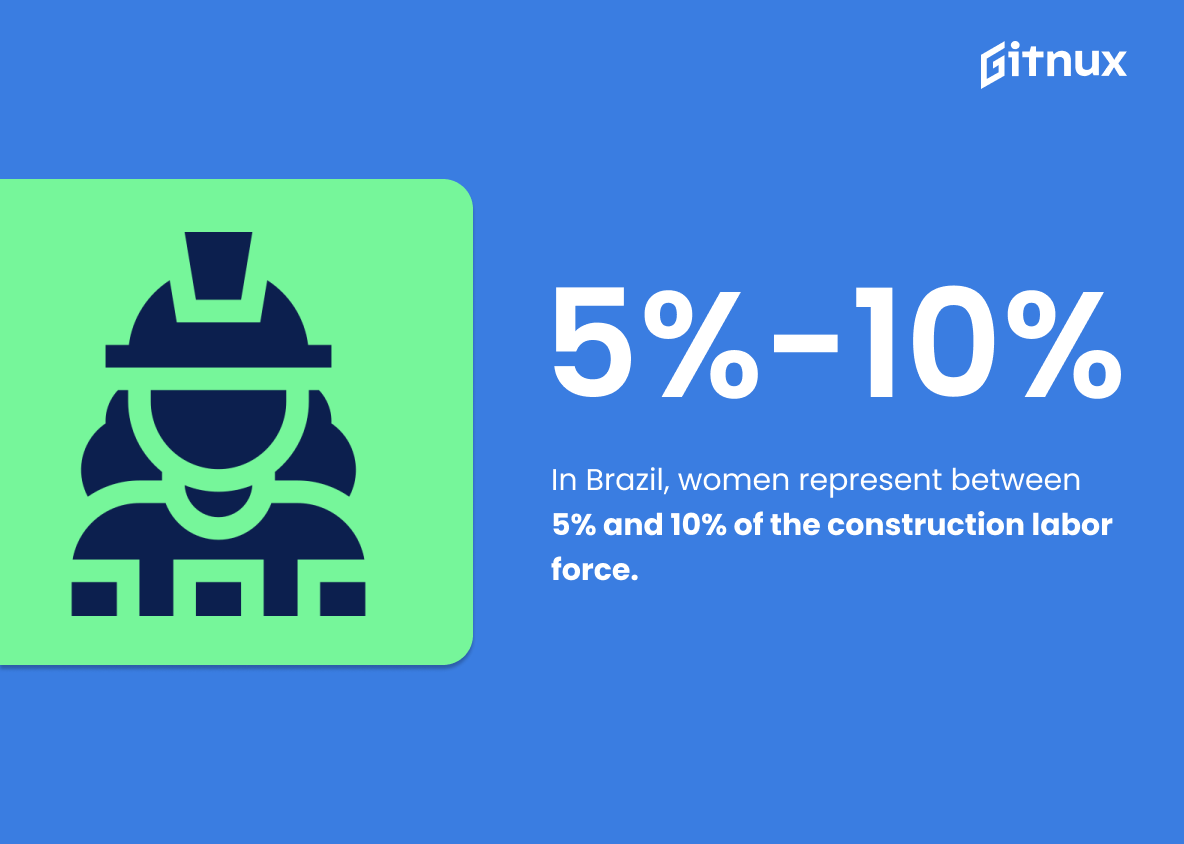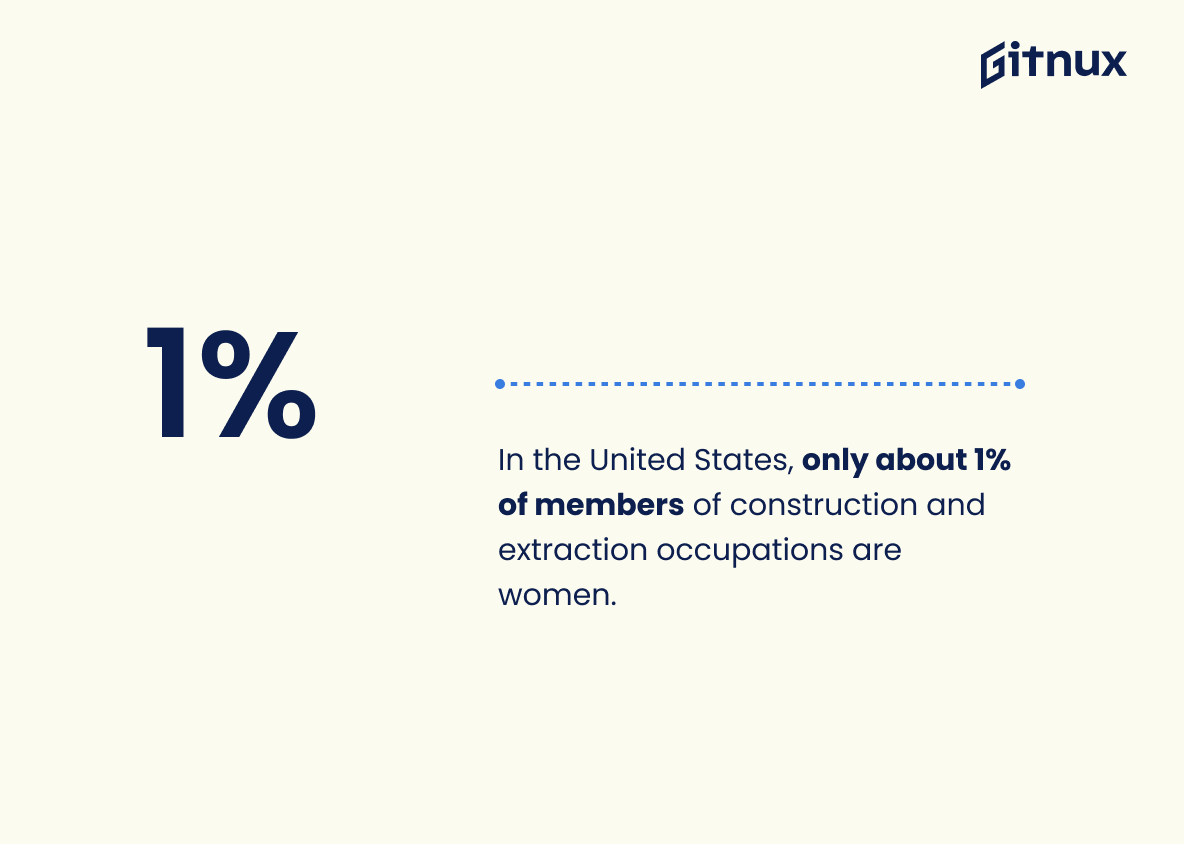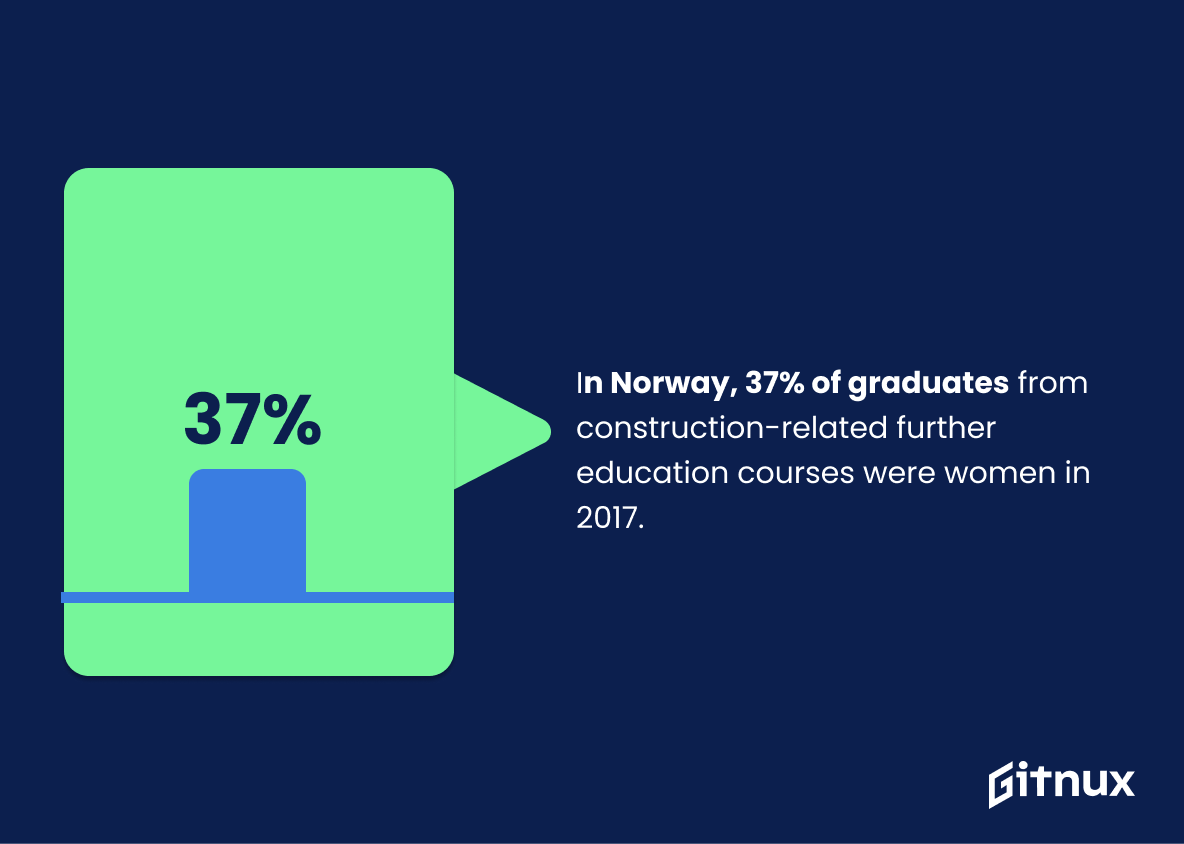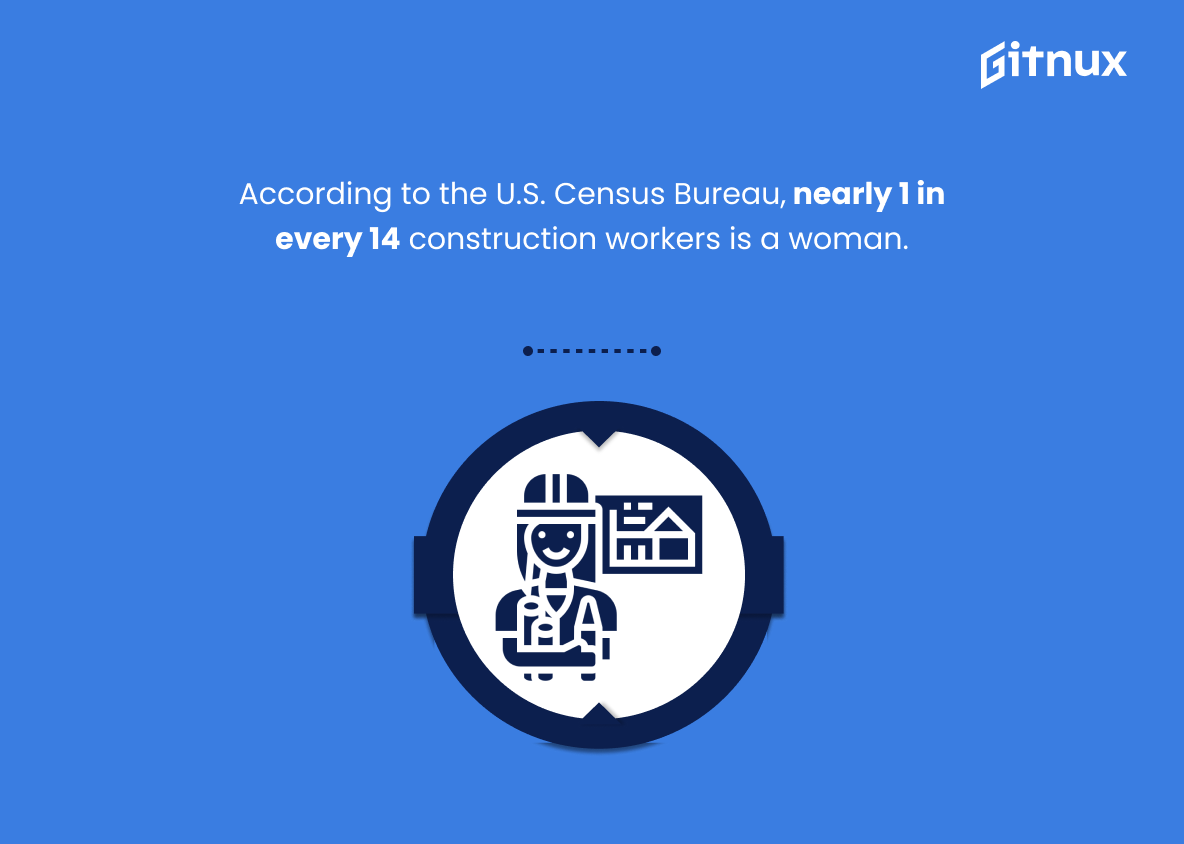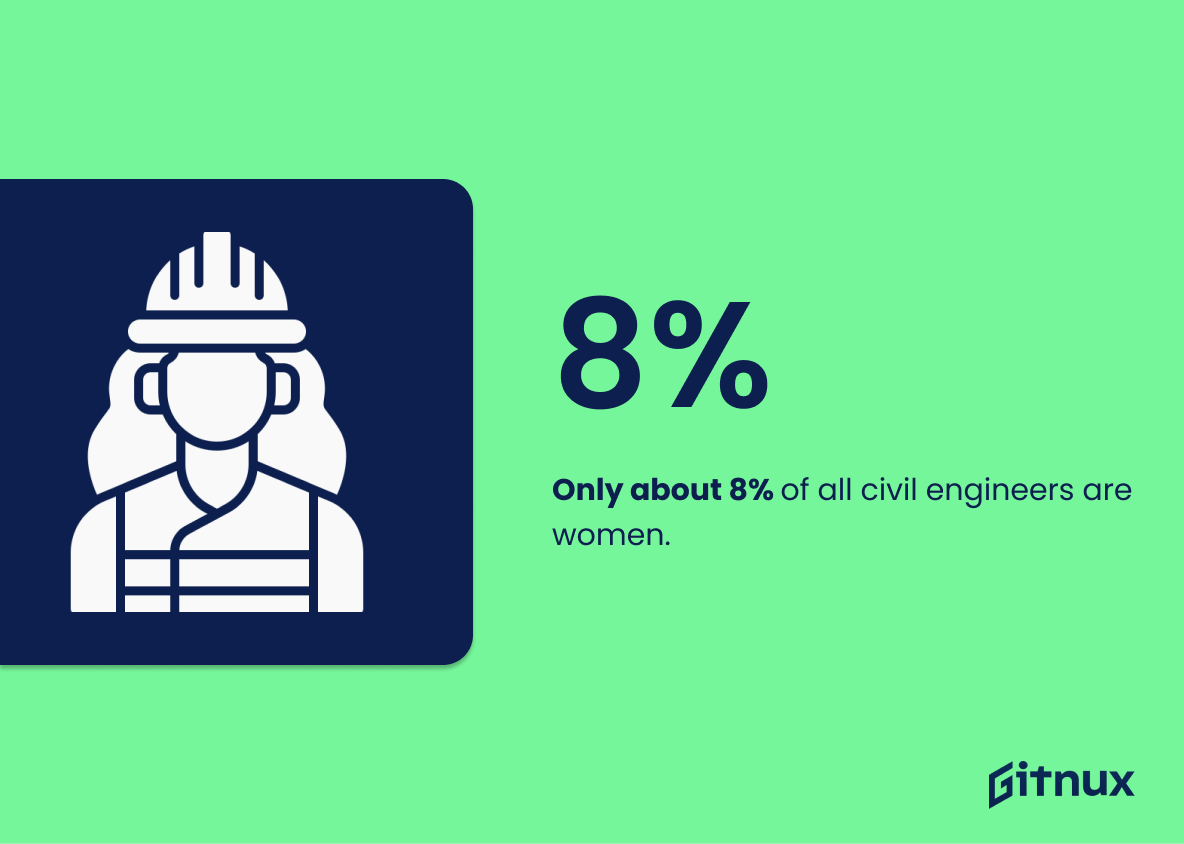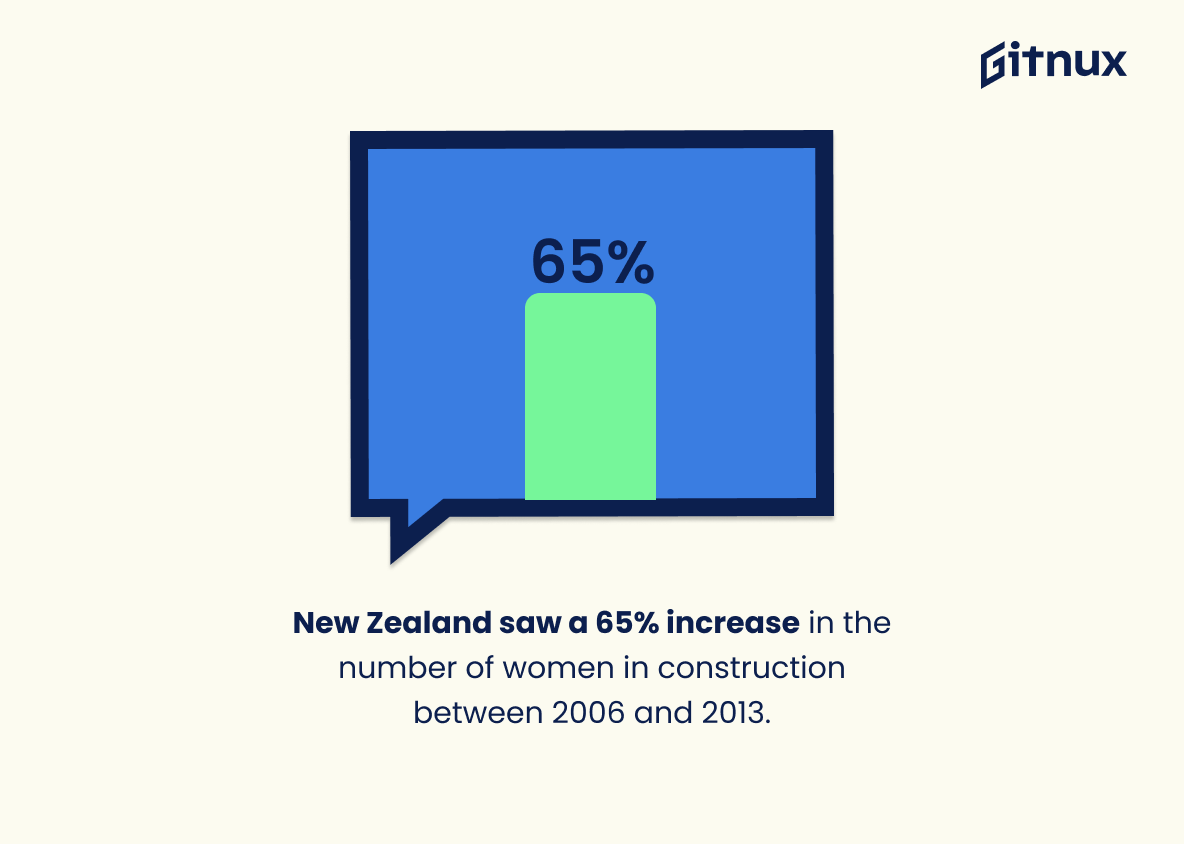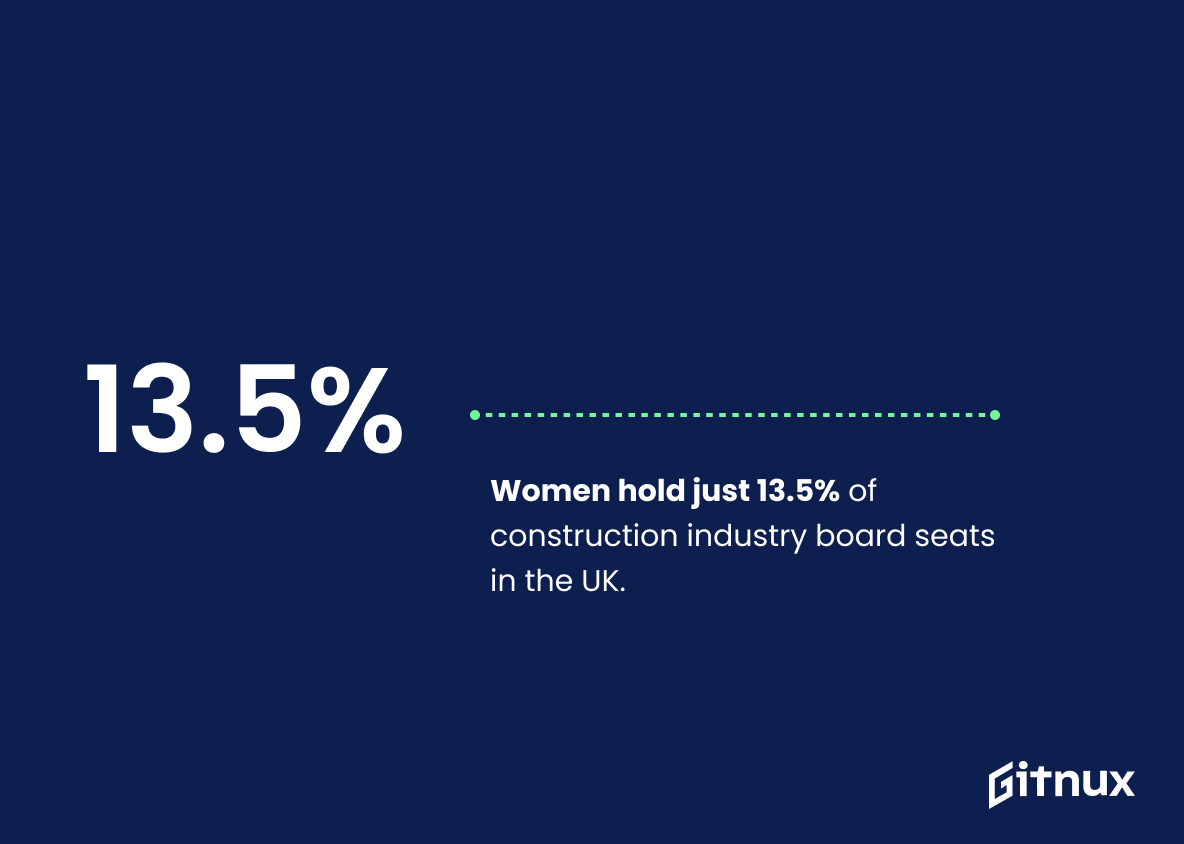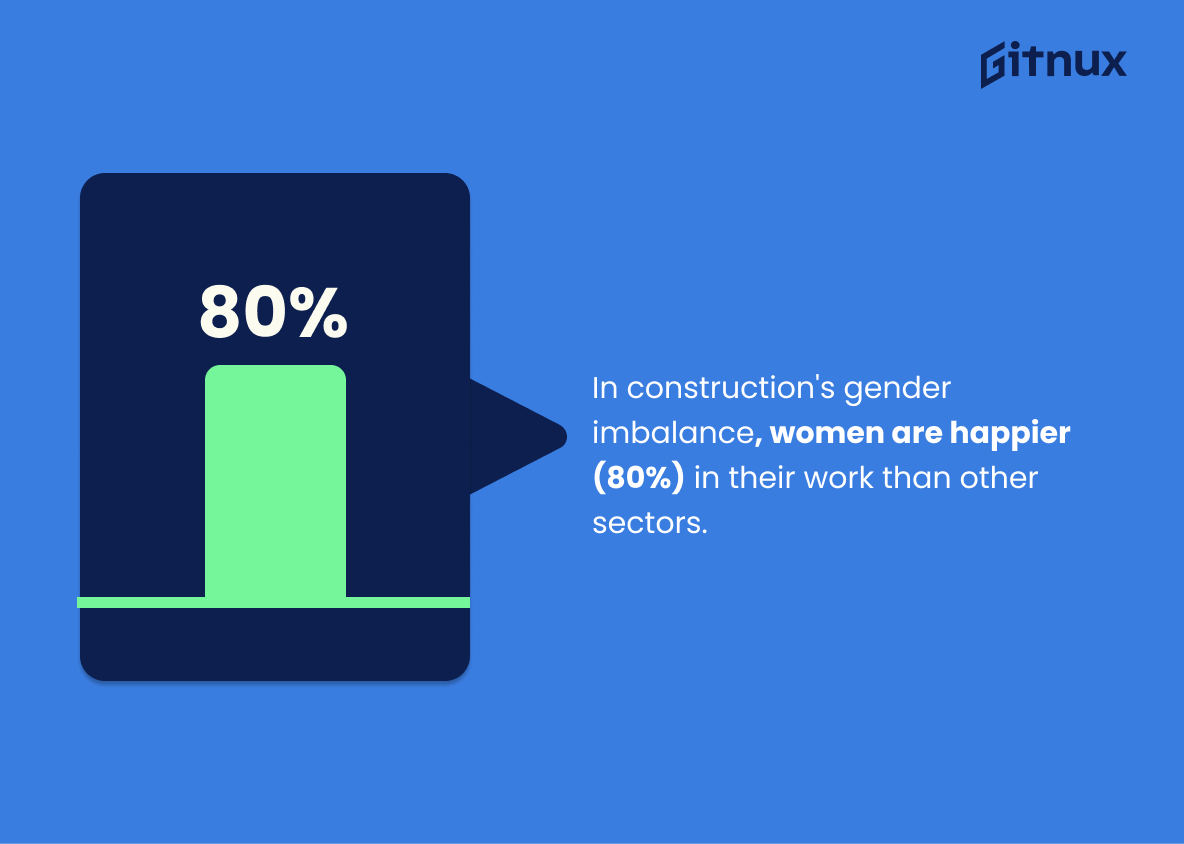In the convoluted world of construction that is commonly perceived as a man’s domain, the presence of women is often overlooked. However, over the years, women have proudly left their imprint on the construction industry, wielded their hammers of resilience and shattered glass ceilings. In this blog post, we dive deep into the intriguing realm of women in construction and provide an illuminating look at how these tenacious women have changed the face of the industry. We’ll explore eye-opening women in construction statistics that underscore their story of empowerment, growth, and continuous contribution to this ever-evolving field. Let’s break ground and start building this conversation.
The Latest Women In Construction Statistics Unveiled
In 2018, women constituted just 9.1% of the construction industry in the United States.
Delving into the realm of Women in Construction Statistics, the revelation that a minute 9.1% of the U.S. construction industry comprised of women in 2018 is a topic that demands attention. This statistic is no mere observation, rather it reflects a systemic underrepresentation of women in a significant economic sector. It allows us to dissect deeper institutional and societal assumptions that potentially hinder equal opportunity. It’s a stepping stone towards evaluating the industry’s inclusivity, the effectiveness of current recruitment efforts, adherence to gender equality, and devising actionable strategies for improvement. Therefore, spotlighting such figures in a blog post becomes necessary to draw attention, provoke thought, stimulate discourse, and advocate for equal gender representation within the construction industry.
Women’s earnings are 99.1% of men’s in the construction industry, compared to an average of 82% in all other industries.
Delving into the intriguing realm of Women in Construction Statistics, we unearth a fascinating gem that shatters commonplace misconceptions. Behold – women’s earnings in construction stand tall at 99.1% of their male counterparts, a statistic starkly distinct from the paltry 82% average in all other industries. This revelation does not merely hint at the importance of harnessing the immense power of diversity within this sector, but features a billboard-sized declaration testifying to the same. It is an encouraging beacon reminding us of the strides already made towards parity while pushing us to continue this growth trajectory in an industry that, it turns out, thrives on the touch of both gender’s capabilities. Illuminating this information adds a fresh, empowering facet to the discussion on Women in Construction – creating an interactive, inspiring mosaic from mere numbers and percentages.
As of 2020, only 5% of registered builders are women in Australia.
Shining a spotlight on the proportion of registered female builders in Australia, one is greeted with a small figure – a mere 5% as recorded in 2020. This bit of data is intriguing, providing a startling reflection of the gender disparity that still thrives within the construction industry. Watch out, the scaffolding seems to be predominantly male, punctuated only occasionally by a woman’s presence. In the world teeming with rallying for gender equality, this petite percentage poses a question – why is the female representation in construction, specifically in builder roles, not evolving at a pace it potentially could? Diving deep into this statistic in the context of a blog post about Women In Construction Statistics, allows us to peep through the peephole at the behind-the-scene stories. It begs a discussion on underrepresented groups in certain industries, career choices, educational pursuits, and societal norms. It could even prompt the industry to assess its own practices, perhaps catalyzing a change we all wish to see – a more equal and inclusive workplace.
Around 8% of Canada’s construction sector workforce is female.
Undeniably, the snippet revolving around the fact that approximately 8% of Canada’s construction sector workforce is female, illuminates a larger narrative that threads through the fabric of our blog post. Dipped in the hues of femininity and strength, it catapults our exploration into Women in Construction Statistics. From this vantage point, we dive into the depths of the industry disparity, revealing a stark imbalance that hitherto sailed under the radar.
More than just numbers, it underlines a valuable story about women carving out their space in an age-old male-dominated milieu. It also lends us a measure to track progress, propelling us to question the status quo while advocating for more women-centric policies in the construction sector. It dispenses a larger dialogue around women in the workforce, diversity, and inclusivity, shaping the foundation for a world of equality where every brick laid down bears the mark of both genders.
In South Korea, women make up only 7.4% of the construction workforce.
Highlighting the fact that South Korean women constitute a mere 7.4% of the construction workforce serves as a numeric testament to the wall of gender disparity still prevalent in the industry. It dynamically underscores the blog’s premise about Women In Construction Statistics, revealing a vivid picture of the underrepresentation and challenges women face in this sector. This percentage, small yet mighty in significance, prompts the readers to question, analyze, and discuss ingrained industry norms and culture, and supports the blog’s pursuit for change and gender balance in the construction industry. It moves beyond just numbers, shaping narratives on inclusivity and empowerment in construction spaces.
In Brazil, women represent between 5% and 10% of the construction labor force.
Highlighting the statistic that women comprise between 5% and 10% of Brazil’s construction labor force underscores the strides women are making in infiltrating a traditionally male-dominated industry. It serves up a potent insight into not only their courage in stepping beyond societal norms, but also their competencies in diving into roles typically associated with their male counterparts. In contrast, it simultaneously draws attention to the vast room for growth and diversity within the sector, thereby fueling discussions and initiatives directed towards encouraging more women to break these proverbial ‘concrete ceilings’. Hence, in the intricate dance of numbers, this Brazil-specific information becomes an eye-catching twirl in the swirling melody of Women in Construction Statistics.
The U.S. construction industry will need to hire 1.1 million more workers, including a significant number of women, over the next decade to replace retiring workers.
Highlighting the projected need to hire 1.1 million construction workers in the U.S. over the next decade is crucial when discussing Women In Construction Statistics, particularly in emphasizing the untapped potential within this predominantly male profession. These numbers serve as a loud clarion call, outlining enormous opportunity for the industry to break barriers, shift gender stereotypes and leverage the strengths that women bring into the sector. It underlines a sense of urgency and incredible scope for gender diversification within the industry, and simultaneously, a chance for women to demonstrate their expertise and innovation within this remarkable profession. In essence, these figures paint a very clear picture of the possibilities waiting on the horizon for women in construction, redefining the established landscapes while addressing the forthcoming industry labor shortage.
In the United States, only about 1% of members of construction and extraction occupations are women.
Delving into the U.S realms of construction and extraction occupations, one might perceive it as a vibrant mosaic of hard hats and steel-toed boots. However, a closer inspection unveils a rather sobering picture: women, who make up approximately 50% of the country’s general workforce, constitute a mere 1% of these fields. This tiny percentage stands as a stark epitome of the gender disparity pervading these sectors. It underlines the existence of glass walls women are struggling to shatter, echoing their extraordinary challenges in accessing and thriving within these traditionally male-dominated trades. Revealing such plight could spark a committed debate about inclusivity and equality in these sectors, help devise strategies to dismantle such barriers, and inspire more women to embrace these occupations.
In Norway, 37% of graduates from construction-related further education courses were women in 2017.
Highlighting the fact that in 2017, 37% of graduates from construction-related further education courses in Norway were women, underscores a critical shift in industry demographics. It paints a picture of a changing landscape where gender diversity is gradually penetrating a traditionally male-dominated field. This noteworthy percentage serves as a beacon of progress, actioning a narrative of empowerment and opportunity. It is an encouraging sign that more women are forging career paths in the construction industry, thus contributing to gender balance, innovation, and broader perspectives within the sector. Indeed, this statistic writes a new chapter for women in construction, redefining boundaries and raising expectations for future inclusion.
According to the U.S. Census Bureau, nearly 1 in every 14 construction workers is a woman.
Spotlighted in this crucial statistic is the rising tide of gender diversity in the construction industry. Framing it in a compelling manner, the U.S. Census Bureau reveals that out of every 14 hard hat-wearing, blueprint-reading, structure-building individuals, one is a woman. That’s not just a number, it’s a narrative. The narrative of a significant shift in an industry once dominated by men, giving voice to the strength and capacities of women. The story doesn’t just end with numbers; it extends to the untold potentials and opportunities waiting to be unearthed in the world of construction when gender balance is encouraged. Such statistical evidence provides a robust foundation for blog posts discussing Women In Construction Statistics, reinforcing their written claims with quantifiable facts and progressing conversations around gender inclusivity in this field.
Only about 8% of all civil engineers are women.
Highlighting the fact that a mere 8% of all civil engineers are women underscores the underlying gender disparity within the construction field. It wavily unfurls the banner of imbalance, calling for attention towards the need to encourage, educate, and empower more women to step into and carve their niche in this male-dominated terrain. Anchoring our narrative with this stark statistic fuels the discussion about gender dynamics in construction, fostering an understanding of the challenges faced by women in this sector and sparking dialogue around potential solutions to this disparity.
New Zealand saw a 65% increase in the number of women in construction between 2006 and 2013.
Painting these growth numbers in sharper relief, New Zealand’s construction landscape underwent a significant change with a phenomenal hike of 65% in the female workforce from 2006 to 2013. This shift underscores the emerging narrative of gender diversity in an industry long dominated by men. By highlighting the journey of New Zealand, it fuels the dialogue around the global surge of women foraying into construction, thus making this statistic a powerful reference point. More importantly, it portrays the potential for women to penetrate even the most traditionally male bastions, altering the foundational bricks of the construction industry. It also sends a message that construction, as a career, is increasingly being embraced by women – a subtle yet strong counter to the gender stereotyping. Furthermore, this statistic brings to light the cultural transformation in play, and it is sure to provoke deep and thought-provoking discussions in a blog post about Women In Construction Statistics.
Women hold just 13.5% of construction industry board seats in the UK.
Delving into the world of construction, where hard hats and steel-toed boots underline a traditionally male-dominated landscape, the figure of women occupying a mere 13.5% of board seats in the UK serves as a stark revelation. It not only unearths the reality of a gender imbalance at the leadership level but also points out to a grit-filled narrative of struggle and perseverance women encounter in this field. As we chart the course of women in construction, this figure becomes a critical landmark on the journey, setting the yardstick against which we can measure progress, confront biases and shatter glass ceilings.
Despite construction having one of the worst gender balances of any industry, women in construction are generally happier in their work than those in other sectors, with 80% saying they are happy in their job.
Illuminating a remarkable contrast, this statistic serves as a beacon of positivity within one of the most traditionally male-dominated arenas – the realm of construction. This statistic uncovers the hidden satisfaction women in construction derive from their work, with a clear majority (80%) expressing work-related happiness. This happiness metric, defying the discouraging gender disparity in the field, underlines the industry’s potential to offer a rewarding and fulfilling work environment for women.
Through this statistic, the blog post about Women In Construction Statistics not only challenges the conventional narrative but also paves the way for greater discussions on job satisfaction and workplace culture within the construction industry. It further highlights the need for attracting more women into the industry and encourages us to delve deeper into understanding what makes these women happy in their roles and how those factors can be amplified to cast a wider net for female talent in the construction sector. The statistic, in essence, becomes a powerful tool in shattering industry stereotypes, while emphasizing the need to foster an environment where more women can find their work fulfilling.
Conclusion
Women in construction are steadily proving that their role extends beyond traditional gender stereotypes. Their invaluable contributions prove that they are not just participating in the construction industry but are key contributors to its growth. The increase in female representation is not merely a statistical phenomenon; rather, it indicates a progressive shift in societal attitudes towards gender roles in the workforce. Although the numbers still oscillate below the ideal, the current trends foster optimism. In the coming years, we anticipate seeing even greater diversity within the ranks of construction executives, laborers, and professionals. Women in construction: smashing through the concrete ceiling, one statistic at a time.
References
0. – https://www.www.catalyst.org
1. – https://www.www.ssb.no
2. – https://www.www.morson.com
3. – https://www.www.xero.com
4. – https://www.www.bls.gov
5. – https://www.www.census.gov
6. – https://www.www.money.co.uk
7. – https://www.www.statista.com
8. – https://www.www.stats.govt.nz
9. – https://www.www.nawic.org
10. – https://www.www.worldbakers.com


